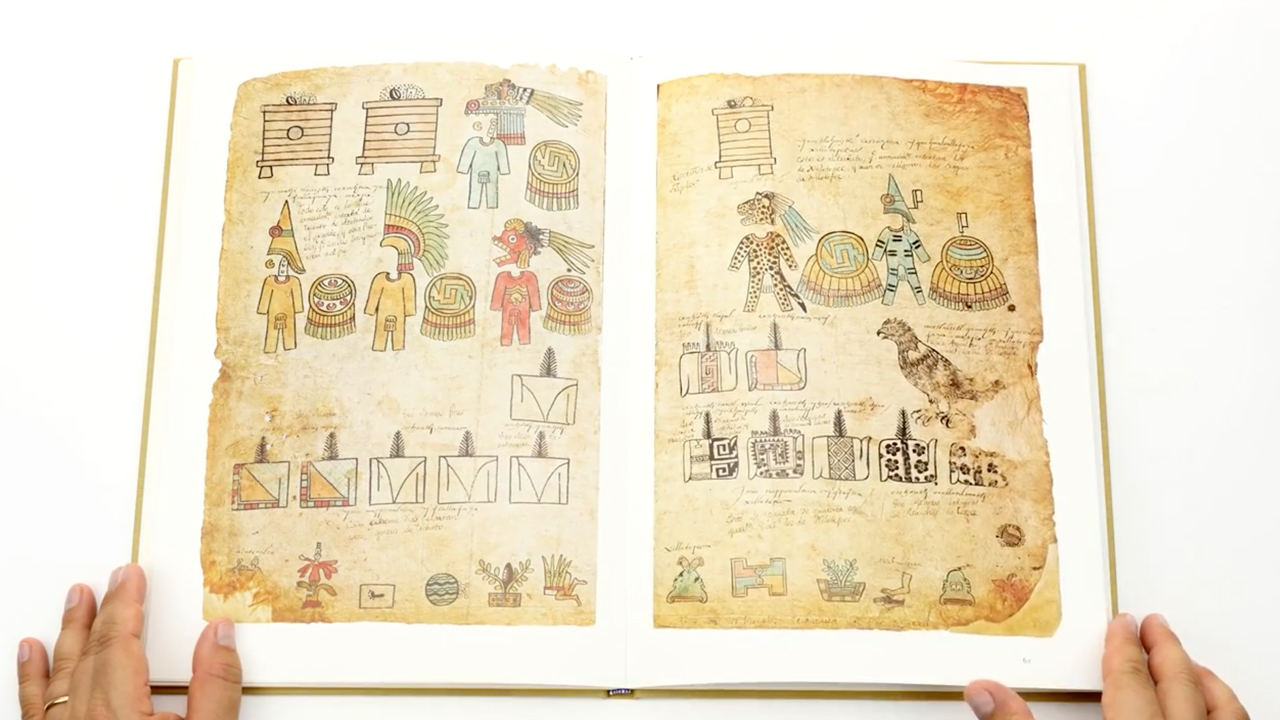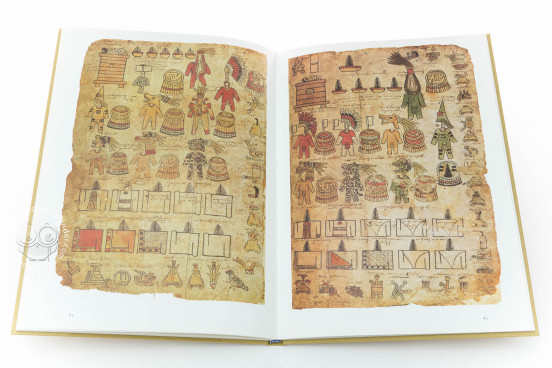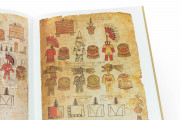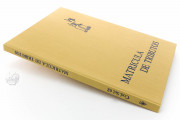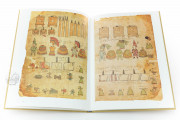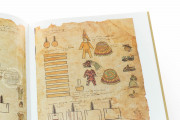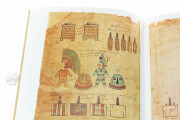The Matrícula de Tributos—confusingly known also as the Tribute Roll and the Moctezuma Codex—was made in the Valley of Mexico probably over the course of years starting certainly after 1511, and perhaps not until after 1520. It records the tributes paid to the Aztec Triple Alliance, consisting of Tenochtitlán, Tetzcoco, and Tlacopán. In its current state, which is incomplete, separate sheets of native amate paper painted on one side have been pasted back-to-back to create a book with leaves that can be turned. It may have been intended that those sheets be attached end to end to create a roll, but there is no scholarly consensus.
The pages may have been an official record either of tributes due to Montezuma II, the last Aztec emperor of Mexico, or tributes actually paid to him or more generally to the central alliance. They may also constitute a postcolonial copy of such a record. If made to record tributes paid, its text must have been completed before Montezuma's death in 1520. Its thirty-two intact pages are filled with pictographs.
Whatever its original form and whether or not rightly connected to Montezuma, the manuscript's pages of pictographs provide valuable insight into the administrative structure of preconquest central Mexico.
Attributed to Many Painter-Scribes
At least six tlacuiloque, Mesoamerican painter-scribes, contributed to the matrícula. Some were trained in the Mixtecan and others in the Mendocino style.
Each Page Devoted to a Province
With few exceptions, each page of the manuscript explicates the tributes paid or to be paid by a single province, expressed in pictographs representing the region's towns and the goods that constituted each tribute. After the creation of the pictorial content, inscriptions were added, first in Nahuatl, and then more in Spanish. These date from the postconquest period.
Along the bottom edge from left to right—and sometimes extending up along the right edge—of each sheet are pictographs for the towns owning tribute. These and the images of goods used to pay the levies to the alliance are rendered in the traditional Mesoamerican fashion, outlined in black and filled in with solid colors. The palette is dominated by red, blue, green, and ocher.
The tribute objects are shown in three groupings, with ceremonial cloaks and other garments at the bottom, military regalia and armaments in the middle, and other trade items—such as jewelry, beads, feathers, plants, and food—at the top.
The Matrícula's Relationship to Codex Mendoza
The matrícula provides a picture of trade and production established at the time of the Spanish conquest. This content bears a close resemblance to the middle section of the later Codex Mendoza, which also records tribute collected by Triple Alliance.
A Distinguished Pedigree
The manuscript was in the collection of Lorenzo Boturini Benaducci (1702-1751). It was confiscated in 1743, with much of the collection, by Pedro Cebrián y Agustín (1687-1752), Count of Fuenclara and Viceroy of New Spain, before finding its way to the Museo Nacional de Anthropología.
We have 1 facsimile edition of the manuscript "Matrícula de Tributos": Matricula de Tributos - Códice de Moctezuma facsimile edition, published by Akademische Druck- u. Verlagsanstalt (ADEVA), 1980
Request Info / Price
